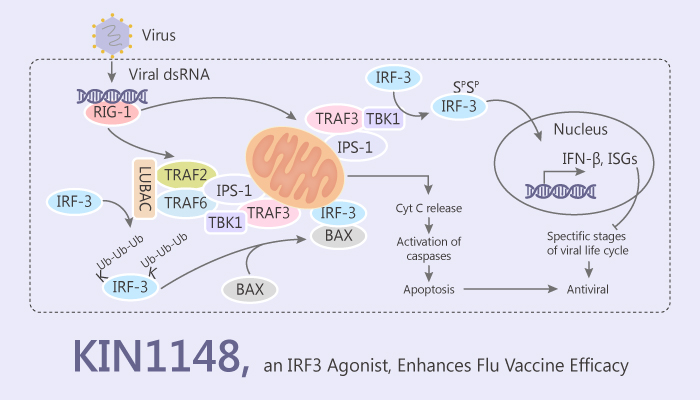Influenza (flu) is a kind of infectious diseases caused by an influenza virus. Symptoms are various, such as high fever, sore throat, runny nose, muscle pains and coughing. The symptoms often last less than one week except for coughing. The latter lasts for longer time. Influenza viruses have four types, three of them infect humans. They are type A-C. Influenza can be severe and mild. Severe influenza has the potential to cause death. Therefore, it is necessary to find out more medicines to cure Influenza.
Influenza vaccines are able to protect humans from influenza virus. Small compounds targeting PRR (pattern-recognition receptor) signaling exhibits anti-influenza virus activity. RLRs (RIG-I-like receptors) recognize many RNA viruses, such as influenza A virus. Once RLR is activated, the downstream phosphorylation of IRF3 happens. Therefore, an effective influenza vaccine has the potential activating IRF3.
Recently, Peter Probst, et al found out KIN1148 as an excellent influenza vaccine adjuvant. It is a potent IRF3 agonist. The agonist stands out from 47000 compounds. KIN1148 activates IRF3 translocation at low concentrations.

In further study, KIN1148 shows protective immune response to immunizing mice. KIN1148 in combination with vaccine enhances influenza virus-specific Th2 and functional antibody responses following challenge. In addition, the combination also exhibits potent effect on naïve animals receiving prime-boost immunization.
Taken together, KIN1148 is a potent IRF3 agonist, and a potential influenza vaccine adjuvant in influenza treatment.
References:
Probst P, et al. Vaccine. 2017 Apr 4;35(15):1964-1971.